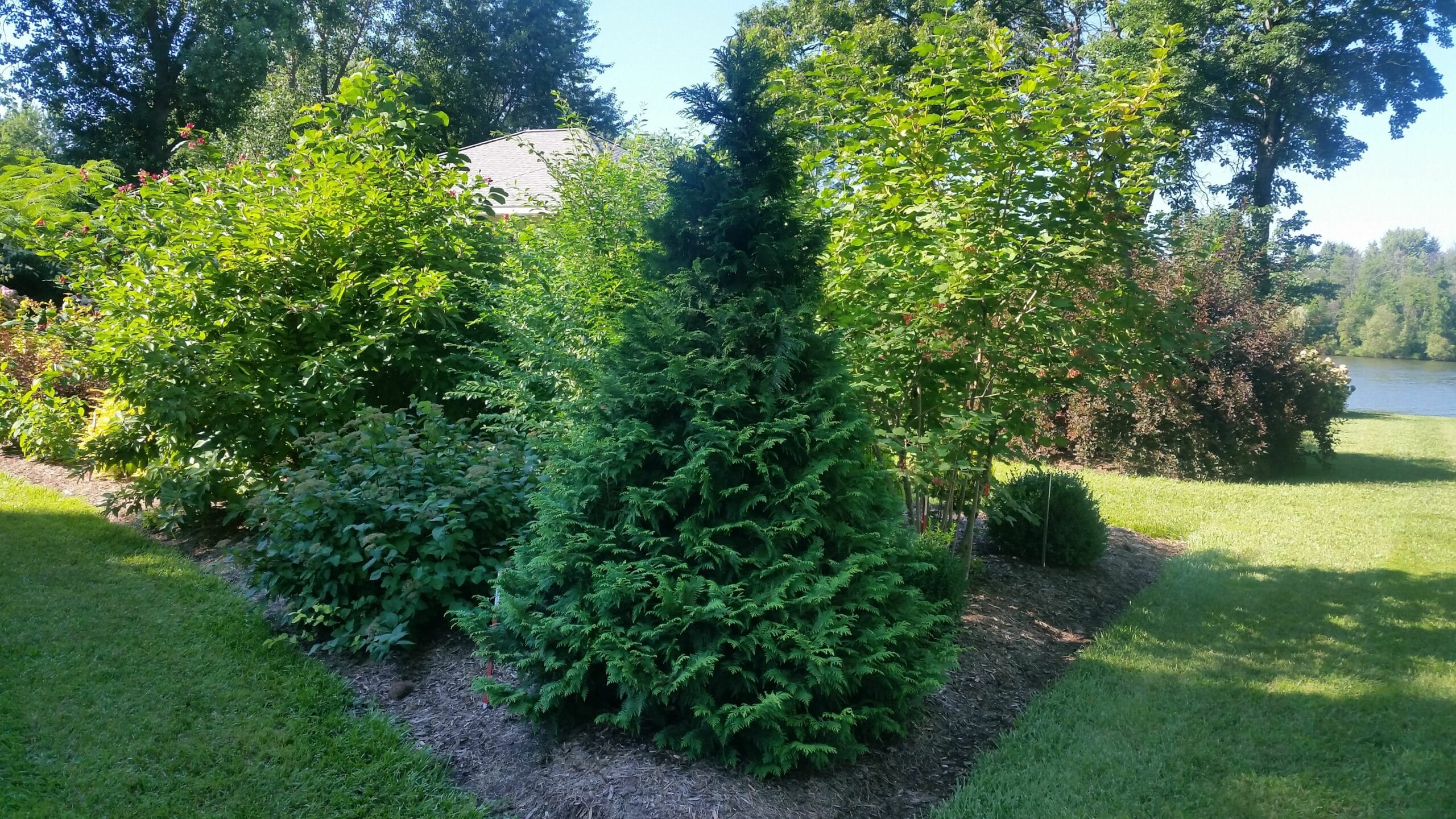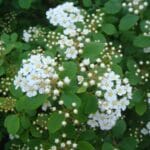Looking for an evergreen tree that’s both stunning and low-maintenance? Meet the Soft Serve False Cypress, a unique conifer that’s captivating gardeners with its soft, ice-cream-like foliage and easy-going nature. This comprehensive guide covers everything you need to know about planting, caring for, and enjoying this modern alternative to the classic Dwarf Alberta Spruce. Get ready to transform your outdoor space with the Soft Serve False Cypress!
Why Choose Soft Serve False Cypress?
The Soft Serve False Cypress (Chamaecyparis pisifera ‘Soft Serve’) stands out for its incredibly soft, feathery foliage that’s a vibrant green with hints of silver-blue underneath. Unlike some slower-growing conifers, it quickly reaches a manageable size, making it ideal for smaller gardens.
Versatile and Visually Stunning
This versatile conifer seamlessly blends into various landscaping styles:
- Specimen Plant: Its unique texture and shape make it a captivating focal point.
- Walkway Border: Line walkways for a touch of evergreen elegance.
- Privacy Screen: Plant in a row for a dense, year-round privacy hedge.
- Groundcover: Mass plantings create a stunning, low-maintenance carpet of green.
Effortless Elegance: Planting and Care
One of the most appealing aspects of the Soft Serve False Cypress is its low-maintenance nature. Follow these simple tips to ensure it thrives:
- Sunlight: Plant in a location that receives at least 6 hours of direct sunlight per day.
- Drainage: Well-drained soil is crucial; amend heavy clay soil with organic matter.
- Planting: Dig a hole twice the width of the root ball, place the tree, and backfill with soil, ensuring no air pockets.
- Watering: Water regularly during the first year, then reduce watering as it becomes established.
- Fertilizer: Generally not required, especially with annual soil enrichment with compost.
- Pruning: Minimal pruning is needed, primarily to remove any dead or diseased branches or for shaping.
Hardy and Pest-Resistant
The Soft Serve False Cypress is known for its resilience. It’s generally resistant to most pests and diseases, making it a relatively carefree addition to your landscape. However, be mindful of potential issues like spider mites and root rot, especially in poorly drained soil.
Analyzing Soft Serve False Cypress Growth: SEO Article Insights
Soft Serve False Cypress offers low-maintenance elegance, reaching a manageable 6-10 feet tall with a slow growth rate, making it ideal for smaller landscapes. While this might not seem fast, this gradual growth allows you to appreciate the tree’s changing form year after year.
Understanding Soft Serve False Cypress Growth
While not as fast-growing as some shrubs, its slow, steady growth is an asset for low-maintenance gardens. Expect to see a height increase of about 2-4 inches each year.
Optimizing Soft Serve False Cypress Growth
To ensure optimal growth, pay attention to these key factors:
- Sunlight: While tolerant of partial shade, providing at least 6 hours of direct sunlight encourages a faster growth rate.
- Well-Drained Soil: Amend heavy clay or compacted soils with organic matter to improve drainage and root development.
- Watering: Deep, infrequent watering is best. Water regularly during the first year to establish a robust root system.
Soft Serve False Cypress in Garden Design
The Soft Serve False Cypress’s unique texture and manageable size open up a world of possibilities in garden design:
- Foundation Plantings: Soften the lines of your home with its graceful form.
- Hedges: Create a dense and visually appealing privacy screen.
- Accent Plants: Use its unique texture to create contrast and visual interest.
- Containers: Its slow growth makes it suitable for container gardening, adding an evergreen element to patios and balconies.
Unmasking the Differences (and Similarities!): Cypress vs. False Cypress
Navigating the world of conifers can be tricky. Cypress and False Cypress, while visually similar, possess key differences that are essential for proper identification and care.
Unraveling the Botanical Distinction
Cypress and False Cypress, despite their similar appearances, belong to distinct genera:
- Cypress: Belongs to the genus Cupressus.
- False Cypress: Belongs to the genus Chamaecyparis.
The most reliable way to differentiate between them is by examining their cones:
- Cypress Cones: Larger with more seeds per scale.
- False Cypress Cones: Smaller and more delicate with fewer seeds per scale.
Beyond Cones: Exploring Appearance and Growth
While both share the characteristic evergreen foliage and scale-like leaves, subtle distinctions set them apart:
- Foliage Texture: False Cypress often boasts a softer, feather-like texture compared to the somewhat coarser texture of true Cypress.
- Foliage Color: False Cypress comes in a wider range of colors, from vibrant greens and cool blue-greens to striking golds and even purples. Cypress, while elegant, typically displays various shades of green.
- Growth Habits: Cypress often exhibits a columnar or upright growth habit. In contrast, False Cypress showcases a broader range, including upright, spreading, and even cascading forms, depending on the specific species or cultivar.
Cypress and False Cypress in the Landscape
Both genera hold a prominent place in landscaping, appreciated for their:
- Evergreen Nature: Provide year-round color.
- Versatile Forms: Suit various garden designs.
- Low-Maintenance Care: Appeal to busy gardeners.
However, False Cypress, with its diverse foliage and unique textures, adds an extra layer of visual interest, often surpassing true Cypress in ornamental value.
Beyond False Cypress: A Guide to Chamaecyparis Varieties
False Cypress trees, known scientifically as Chamaecyparis, offer the elegance of cypress trees with greater hardiness and a captivating array of colors and textures. Let’s explore the world of Chamaecyparis and discover the diverse cultivars that grace gardens with their beauty.
Understanding the Misnomer
The term “False Cypress” can be misleading. While they might share a resemblance with true Cypress trees, they belong to a distinct genus. The “false” designation likely stems from their visual similarities rather than any lesser qualities.
Unveiling the Alternate Names
Chamaecyparis trees are known by several names, often reflecting specific species or origins:
- Lawson Cypress: Commonly used, this name specifically refers to Chamaecyparis lawsoniana.
- Sawara Cypress: This name designates the species Chamaecyparis pisifera, known for its golden varieties, including the popular ‘Gold Mop.’
- Japanese False Cypress: Often used interchangeably with “Sawara Cypress,” this name highlights the species’ Japanese origin.
Popular Chamaecyparis Cultivars
The Chamaecyparis genus offers a wealth of cultivars to suit various landscaping needs and styles. Here are some noteworthy examples:
| Cultivar Name | Common Name(s) | Distinctive Features |
|---|---|---|
| Chamaecyparis pisifera ‘Soft Serve’ | Soft Serve False Cypress | Soft, fern-like foliage, pyramidal shape |
| Chamaecyparis pisifera ‘Gold Mop’ | Gold Mop Sawara Cypress | Golden-yellow foliage, mound-forming habit |
| Chamaecyparis lawsoniana ‘Ellwoodii’ | Ellwoodii Lawson Cypress | Blue-green foliage, columnar shape |
Why Gardeners Love Chamaecyparis
Chamaecyparis trees have become a staple in gardens worldwide, prized for their:
- Evergreen Foliage: Provides year-round color and texture, adding visual interest even in the depths of winter.
- Disease Resistance: Generally low-maintenance, they’re less susceptible to many common conifer pests and diseases.
- Versatility: With a wide range of colors, shapes, and sizes, Chamaecyparis cultivars cater to diverse design preferences.
- Adaptability: Tolerant of various growing conditions, they thrive in well-drained soil and prefer locations with ample sunlight.
If you’re exploring traditional celebrations, our article on Cinco de Mayo offers a fascinating glimpse into this vibrant holiday. Interested in culinary history? Discover the story behind sheep’s pluck and its intriguing past.
















1 thought on “Soft Serve False Cypress: A Complete Guide to Planting and Care”
Comments are closed.